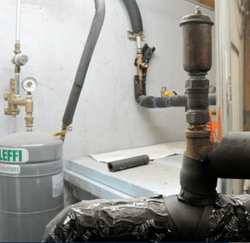There seams to be a plethora of air separators to choose from, they run from $5 to $80 plus. I want to put an additional one on my wood boiler loop. Cheap is best. Any suggestions?
Air separator choices
- Thread starter 4acrefarm
- Start date
-
Active since 1995, Hearth.com is THE place on the internet for free information and advice about wood stoves, pellet stoves and other energy saving equipment.
We strive to provide opinions, articles, discussions and history related to Hearth Products and in a more general sense, energy issues.
We promote the EFFICIENT, RESPONSIBLE, CLEAN and SAFE use of all fuels, whether renewable or fossil.



